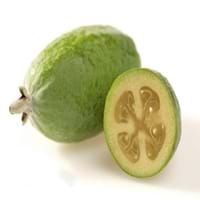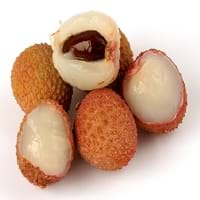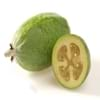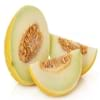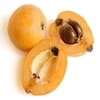Benefits
Health Benefits
Anti depressant, Cancer prevention, Reduces nervous tension, Treatment of alzheimer's disease, Treatment of Lung disease
Cancer prevention, Cures gastro-intestinal troubles, Heart care, Muscle pain relief, Prevents blindness from diabetes
General Benefits
Digestive aid, Helps in weight loss, Improves blood circulation, Strengthens bones, Treatment of common cold
Boosts immune system, Digestive aid, Fights against infections, Helps in weight loss, Maintains healthy cholesterol level, Strengthens bones
Skin Benefits
Brightens and lightens complexion, Skin rejuvenation
Anti-aging benefits, Skin rejuvenation
Hair Benefits
Promotes longer and healthier hair, Protects hair
Promotes longer and healthier hair, Protects hair
Allergy
Allergy Symptoms
NA
Coughing, Diarrhea, Headaches, Hives, Itching, Labored Breathing, Nausea, Runny nose, Swelling of mouth, tongue or lips, Vomiting, Watery eyes
Side Effects
Allergic reaction
May cause abdominal pain, Diarrhoea, Mouth irritation, Throat irritation, Weight gain
Recommeded for
Pregnant Women
Yes
Yes
Lactating Women
Yes
Yes
Best Time to Eat
As a snack in the late afternoon, Don't consume at night and before bed, Eat the fresh ones, avoid mixing with any other foods, don't eat after meal., Morning time (before lunch)
As a snack in the late afternoon, Don't consume at night and before bed, Eat the fresh ones, avoid mixing with any other foods, don't eat after meal., Morning time (before lunch), Strictly avoid empty stomach
Nutrition
Serving Size
100 g
100 g
Carbs
12.92 g
38
16.53 g
19
Fiber
6.40 g
7
1.30 g
33
Sugar
8.20 g
33
15.23 g
8
Protein
0.98 g
27
0.83 g
35
Protein to Carb Ratio
0.05
22
0.05
22
Vitamins
Vitamin A (Retinol)
Not Available
0.00 mcg
37
Vitamin B1 (Thiamin)
0.01 mg
99+
0.01 mg
99+
Vitamin B2 (Riboflavin)
0.02 mg
40
0.07 mg
14
Vitamin B3 (Niacin)
0.30 mg
99+
0.60 mg
24
Vitamin B5 (Pantothenic Acid)
0.23 mg
24
0.00 mg
99+
Vitamin B6 (Pyridoxin)
0.07 mg
25
0.10 mg
15
Vitamin B9 (Folic acid)
23.00 mcg
11
14.00 mcg
21
Vitamin C (Ascorbic Acid)
32.90 mg
26
71.50 mg
7
Vitamin E (Tocopherole)
0.16 mg
32
0.07 mg
38
Vitamin K (Phyllochinone)
3.50 mcg
19
0.40 mcg
33
Lycopene
5.00 mcg
7
0.00 mcg
9
Lutein+Zeaxanthin
27.00 mcg
26
0.00 mcg
36
Choline
Not Available
7.10 mg
14
Fat
0.60 g
14
0.44 g
20
Minerals
Potassium
172.00 mg
99+
171.00 mg
99+
Iron
0.14 mg
99+
0.13 mg
99+
Sodium
3.00 mg
17
1.00 mg
20
Calcium
17.00 mg
24
5.00 mg
99+
Magnesium
9.00 mg
26
10.00 mg
25
Zinc
0.06 mg
27
0.07 mg
26
Phosphorus
19.00 mg
26
31.00 mg
16
Manganese
0.08 mg
34
0.06 mg
99+
Copper
0.04 mg
99+
0.15 mg
11
Selenium
Not Available
0.60 mcg
10
Fatty Acids
Omega 3s
58.00 mg
13
65.00 mg
12
Omega 6s
214.00 mg
9
67.00 mg
27
Sterol
Water Content
83.28 g
99+
81.76 g
99+
Ash
0.38 g
34
0.44 g
30
Calories
Serving Size
100 g
100 g
Calories in Fresh Fruit with Peel
Not Available
Not Available
Calories in Fresh Fruit without Peel
55.00 kcal
12
66.00 kcal
10
Calories in Frozen Form
Not Available
77.73 kcal
8
Calories in Dried Form
747.00 kcal
1
277.00 kcal
21
Calories in Canned Form
Not Available
91.00 kcal
8
Calories in Foods
Calories in Juice
25.00 kcal
40
50.00 kcal
30
Calories in Jam
220.00 kcal
24
260.00 kcal
14
Calories in Pie
300.00 kcal
18
280.00 kcal
28
Characteristics
Type
Tree fruit
Tree fruit, Tropical
Season
Autumn, Winter
Spring, Summer
Varieties
Anatoki, Gemini, Kaiteri, Kakariki, Pounamu, Unique, Apollo, Den's Choice, Kakapo, Mammoth, Opal Star, Triumph and Wiki Tu
Emperor fruit, Mauritiu, Sweet Heart, Brewster, Haak Yip and Bengal
Seedless Variety
No
No
Color
Green
Bright red, Pink red
Inside Color
White
Greyish-white
Shape
Oval
Oval
Texture
Succulent
Fleshy
Taste
Sweet
Crunchy, Juicy, Sweet
Origin
Argentina, Brazil, Paraguay, Uruguay
China, Indonesia, Philippines, Vietnam
Grows on
Not Available
Trees
Cultivation
Soil Type
Clay loam, Gravely loam, Sandy
Alluvial, Loam, Well-drained
Soil pH
6-6.5
5.5-6.5
Climatic Conditions
Cold, Warm
Absence of strong wind, Cold, Dry, Without frosts
Facts
Facts about
- Feijoa is called as "pineapple guava" in some countries.
- Feijoa tree is an ornamental plant that can also be used as hedge & windbreak.
- All parts of feijoa fruit are edible(skin is mostly discarded).
- The seed of Lychee fruit is toxic & can adversely affect the digestive system.
- This fruit gives a smoky flavor when eaten dried.
- This fruit is a symbol of love and romance in China.
In Alcoholic Beverages
Wine
Yes
Yes
Beer
Yes
Yes
Spirits
Yes
Yes
Cocktails
Yes
Yes
Production
Top Producer
New Zealand
China
Other Countries
Australia, Azerbaijan, India, Japan, United States of America
Australia, India, South Africa, Thailand, United States of America
Top Importer
China
Hong Kong
Top Exporter
New Zealand
China
Scientific Name
Botanical Name
Acca sellowiana
Litchi chinensis
Synonym
Feijoa sellowiana or Orthostemon sellowianus
Nephelium litchi
Classification
Domain
Eukarya
Eukarya
Kingdom
Plantae
Plantae
Subkingdom
Tracheobionta
Tracheobionta
Division
Magnoliophyta
Magnoliophyta
Class
Magnoliopsida
Magnoliopsida
Subclass
Rosidae
Rosidae
Order
Myrtales
Sapindales
Family
Myrtaceae
Sapindaceae
Genus
Acca
Litchi
Species
A. sellowiana
L. chinensis
Generic Group
Myrtle
Soapberry
